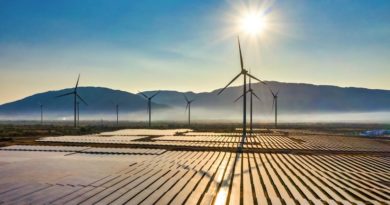
The International Dimensions of the European Hydrogen Strategy
It is at the same time a chance and a burden for industry to adapt their processes to the ambitious climate goals of the EU and to reduce greenhouse gas emissions. One way could be to replace fossil fuels and feedstock in hard-to-decarbonise sectors with clean hydrogen. Hydrogen is for a variety of actors the Holy Grail to reach the ambitious climate goals of the EU and the European Commission and EU Member States support the idea to establish a “hydrogen economy” to boost demand and to reach economies of scale.
Until now, the production of clean hydrogen is not yet competitive in comparison to fossil-based hydrogen. Besides the need to speed up and enhance renewable energy production in Europe, it will be necessary to tap the potential of renewable energy worldwide, first and foremost in regions where due to their geography renewable energy and subsequently clean hydrogen can be produced more cost-efficiently.
The European Hydrogen Strategy gives us the chance to pave the way for these international co-operations.
As a prerequisite, to establish a worldwide market for hydrogen, we have to set and promote standards to establish a rules-based market that contributes to a secure and competitive supply of hydrogen for the EU market.
The interest in clean hydrogen is growing globally and the European Union should be ambitious to become a world leader in not only the production of clean hydrogen and the use of clean hydrogen, but also to pay attention to keep its current good position as technology. Competition is strong: countries like China, Japan and South Korea are pursuing ambitious plans for hydrogen and fuel cell technologies and have already established national plans for the development of markets and an industry. While EU countries issue only about 16% of the total patents concerning hydrogen, the three Asian countries alone account for more than 55% of all worldwide patents regarding fuel cells and over 65% of all hydrogen-related patents. Consequently,
the EU has to take fast action to establish a conducive framework which allows for the full development of its strong international brands and by that secure future-proof jobs.
At the same time, hydrogen provides Europe with the chance to re-design its energy partnerships and to promote actively new opportunities for cooperation based on the production of clean hydrogen with both neighbouring countries and regions, but also on an international level. The German government – in the context of its national hydrogen strategy – is one of the front-runners in entering new hydrogen partnerships, for example with Marocco, Chile or Australia. Co-operation with North Africa, with its solar energy resources and its average of 3.600 hours of sunshine yearly, the windy Sahara desert and hydropower offers opportunities which should be strategically seized at the European level in terms of a “Common European external energy policy”.
Studies and projects, for example by the German development aid implementing agency, are showing that one option might be to establish an “intermediary European buyer” to grant purchase commitments and by that spur extension of renewable energy production and establish long-term delivery relationships.
In addition, North Africa and Europa are already connected by several existing natural gas pipelines being the most cost-effectively and environmental-friendly way to transport hydrogen. The same is true for Ukraine that has good wind resources together with a large potential for biomass and is already connected to the European natural gas grid. Repurposing for hydrogen could become “the” new task for gas suppliers. The characteristic of hydrogen as an energy carriers and storage allows for optimal usage of renewable energy worldwide – Let’s build up a global hydrogen economy!




